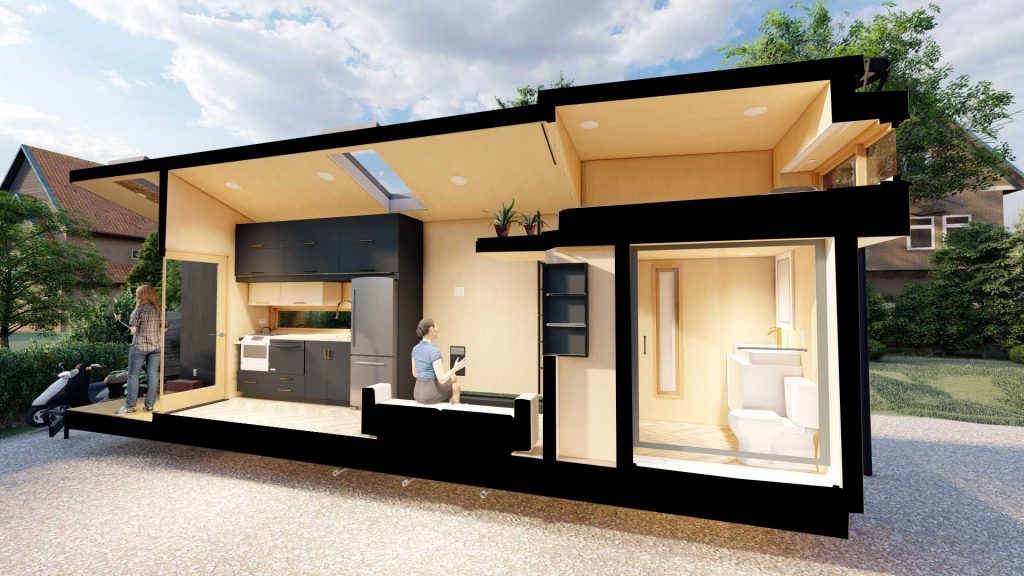This is Anthony Thompson, chief editor and the founder of this site, Tinyhousegarage. I'm a home architect. Basically, I've created this site to help people...Read more
Designing a tiny house can be both exciting and challenging. The key is to maximize the use of space while still creating a functional and aesthetically pleasing home. Here are some tips on how to design a tiny house:
First, consider the layout of the tiny house. The floor plan will need to be well-thought-out in order to make the most of the available space. Think about how you will use each room and what furniture or storage solutions will work best in each area.
Next, pay attention to the details. Every element in a tiny house must serve a purpose and be carefully chosen in order to avoid making the space feel cluttered or cramped. From light fixtures to doorknobs, every detail should be carefully considered.
Finally, don’t forget about curb appeal! Even though it may be small, your tiny house still needs to have good curb appeal. This can be achieved through thoughtful exterior design, including choosing an appropriate roofline and siding material.
- Decide the purpose of your tiny house
- Choose the size and location of your tiny house
- Sketch out a floor plan for your tiny house
- Select materials for your tiny house based on your climate and budget
- Build or hire someone to build your tiny house according to your specifications

Credit: www.tinyheirloom.com
What are the Benefits of Living in a Tiny House
Assuming you would like a blog post discussing the benefits of living in a tiny house: There are many reasons why people are drawn to the small home movement. The most common reasons are environmental, financial, and personal.
The average American home is around 2,600 square feet, while the average tiny house is only about 400 square feet. That means that a family can save an incredible amount of money and resources by downsizing their living space. In fact, one study found that the average family who lives in a traditional sized home spends about $1,400 per month on housing costs, while a family living in a tiny house only spends about $500 per month.
In addition to being more affordable, tiny houses use fewer resources than traditional homes. They have less of an impact on the environment because they require less energy to heat and cool and often use sustainable materials. For example, many people who build tiny houses use solar panels to power their homes completely off-grid.
But perhaps the most appealing aspect of living in a tiny house is the simplicity it offers. With fewer possessions and less space comes more freedom and flexibility. People who live intiny houses often report feeling lighter emotionally and having more time for hobbies or pursuits outside of work.
If your dream is to travel or live minimally, downsizing into a smaller home can be liberating. Of course, there are some challenges that come with living in such close quarters. It can be difficult to entertain guests or have privacy if you’re not used to it (though some people argue that it forces you to be more selective about who you invite into your home).
And even though they cost less upfront, building or buying a well-madetiny house still requires a significant investment.
How To Design A (Tiny) House | Season 1 | Episode 7
Conclusion
If you’re interested in design and architecture, chances are you’ve been intrigued by the tiny house movement. And why wouldn’t you be? These houses are usually super cute, ultra-efficient, and can often be built for a relatively low cost.
But before you start designing your own tiny house, there are a few things you should keep in mind.
First of all, it’s important to understand the limitations of a tiny house. You’ll need to make sure that your design complies with local building codes and regulations.
And because most tiny houses are less than 400 square feet, you’ll have to be very efficient with your space planning.
One way to maximize space in a tiny house is to use multi-purpose furniture. For example, instead of a traditional sofa, you could opt for a futon or daybed that can double as a guest bed.
Or choose a coffee table that also serves as storage for games or other items.
Another important consideration fortiny house design is transportation. If you plan on moving your tiny home around frequently, you’ll need to make sure it’s designed accordingly.
That means ensuring that it’s lightweight and easy to tow behind a vehicle.
Finally, don’t forget about the details! Even though your Tiny House will be small, there’s no reason why it can’t have all the amenities of a larger home.
So think about what features are most important to you and include them in your design plans.

This is Anthony Thompson, chief editor and the founder of this site, Tinyhousegarage. I'm a home architect. Basically, I've created this site to help people build tiny houses with a limited budget and land space or people who are homeless. As a home architect, I became very disheartened when I saw homeless people around me, which influenced me to create this site to help people build beautiful tiny houses.
More Posts
